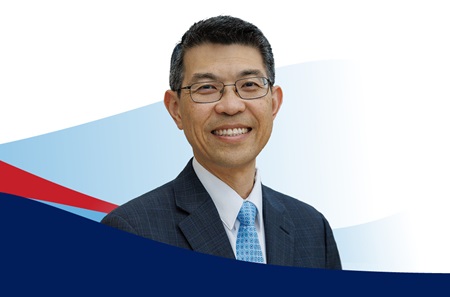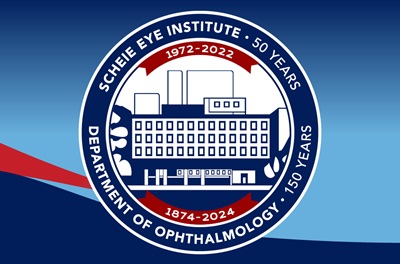 The first FDA-approved gene therapy to reverse blindness in children and adults with a rare, inherited retinal disease. One of the most advanced programs for thyroid eye disease in the country. A groundbreaking study, funded by the National Institutes of Health (NIH), on the genetic risk factors that contribute to the high incidence of glaucoma among African Americans. These are just a few recent examples of how the Scheie Eye Institute, now 50 years old, has helped changed the face of ophthalmic medicine in the Philadelphia region, throughout the nation, and around the world.
The first FDA-approved gene therapy to reverse blindness in children and adults with a rare, inherited retinal disease. One of the most advanced programs for thyroid eye disease in the country. A groundbreaking study, funded by the National Institutes of Health (NIH), on the genetic risk factors that contribute to the high incidence of glaucoma among African Americans. These are just a few recent examples of how the Scheie Eye Institute, now 50 years old, has helped changed the face of ophthalmic medicine in the Philadelphia region, throughout the nation, and around the world.
The institute’s success is rooted in the rich history of Penn’s department of Ophthalmology. Founded in 1874, the same year as the Hospital of the University of Pennsylvania (HUP), the department soon established itself as a leader in clinical care, education, and research for diseases and conditions of the eye. The department continued to expand and upgrade its programs, equipment, and facilities, and in 1936 welcomed its first two ophthalmology residents. One was Harold G. Scheie, MD.
By the late 1960s, the department had outgrown its clinical and laboratory facilities. Scheie, chairman since 1960, led fundraising efforts for a new eye hospital, and in 1972 the Scheie Eye Institute opened the doors of its signature round building on the campus of what is now Penn Presbyterian Medical Center (PPMC). Within the last decade, the institute has completed major renovations at its flagship building and opened satellite offices in Media, Radnor, and the Perelman Center for Advanced Medicine (PCAM) in Philadelphia.
A Foundation of Excellence, an Eye on the Future
 Bennie H. Jeng, MD, who became chair of the department of Ophthalmology and director of the Scheie Eye Institute in July, is excited about what’s ahead. Over the next 5 to 10 years, Jeng envisions growth in its research enterprise, with a strong focus on retinal generation and understanding the mechanisms of nerve damage, such as from glaucoma, in order to develop new therapies for prevention or reversal.
Bennie H. Jeng, MD, who became chair of the department of Ophthalmology and director of the Scheie Eye Institute in July, is excited about what’s ahead. Over the next 5 to 10 years, Jeng envisions growth in its research enterprise, with a strong focus on retinal generation and understanding the mechanisms of nerve damage, such as from glaucoma, in order to develop new therapies for prevention or reversal.
He added, “On the clinical side, we are going to greatly expand our enterprise in not only our existing locations, but also into surrounding areas like New Jersey and Bucks County to provide more Penn Medicine quality services in the community.”
Jeng also noted that education is a big part of Scheie Eye Institute’s mission. There are currently four ophthalmology faculty serving as deans in the medical school – a level of representation not typically found in other schools, and demonstrative of the Institute’s commitment to training the next generation of ophthalmologists.
“The Perelman School of Medicine is a top producer of ophthalmology candidates and students that go into ophthalmology, in huge part because of the role models at Scheie Eye Institute. We have one of the best, most well-rounded residency training programs in the country, with medical and surgical education as well as research opportunities,” he said.
The mix of clinicians, scientists, and educators under one umbrella makes for a unique synergy and creativity that draw top talent from across the country to work at Scheie and attend its annual Continuing Medical Education events.
The first weekend in May, Penn Medicine will host two days of events commemorating Scheie’s 50th anniversary and the Ophthalmology department’s 150th year. Festivities will include a system-wide vision science symposium and clinical and translational research symposium, and will culminate in a gala celebration at the Barnes Foundation.
Highlights of Scheie Eye Institute
 Offers individualized care across 17 ophthalmic sub-specialties
Offers individualized care across 17 ophthalmic sub-specialties- One of the largest teams of eye care specialists in the United States, with more than 130,000 patient visits each year
- One of the top two recipients of National Eye Institute funding for the past five years*
- Ranks in the top 1% of programs nationwide for number of grants/trials per alumnus
*Statistic from 2021